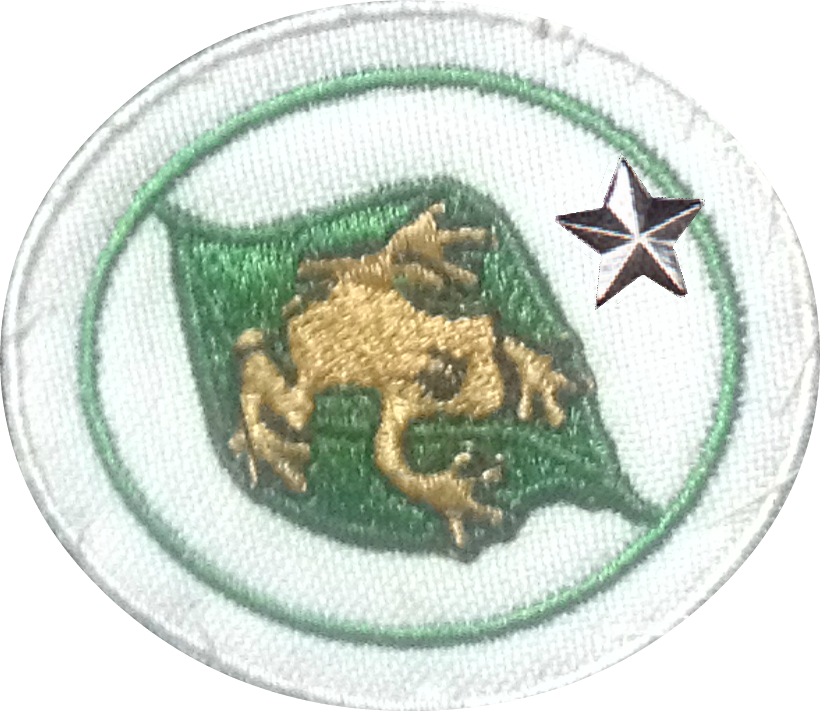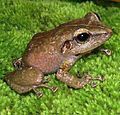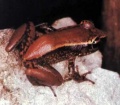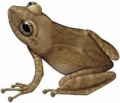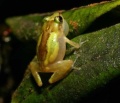Difference between revisions of "AY Honors/Coquí - Advanced"
m |
(Marked this version for translation) |
||
| Line 1: | Line 1: | ||
<translate> | <translate> | ||
| + | <!--T:10--> | ||
<nowiki/>{{honor_landing | <nowiki/>{{honor_landing | ||
|honorname=Coquí - Advanced | |honorname=Coquí - Advanced | ||
Revision as of 14:36, 15 February 2021
| Coquí - Advanced | |
|---|---|
| Regional | |
Skill Level ??? | |
Approval authority Puerto Rican Union | Year of Introduction Unknown |
AY Honors/Coquí - Advanced/Overview
The most challenging requirement of this honor is probably this:
11. Choose a coquí species and extract a spiritual lesson, application or illustration, and share it with the club.
1. Have the Coquí honor.
2. Demonstrate slides or photos of five different coquís than those demonstrated in the basic honor, giving the scientific name.
3. Demonstrate slides or photos of two Eleutherodactylus in other countries, besides Puerto Rico.
4. Which are the only coquís that sing or call during the day and why do they do it?
5. Which coquís live in the following habitats:
- a. Floor of the forest.
- b. Under the ground, fallen leaves and roots in the cloud forest of El Yunque National Forest.
- c. High vegetation.
- d. In the grass.
- e. Low vegetation.
- f. Bromeliads.
- g. Caves known as the "guajonales."
- h. In rivers and streams.
- i. In trees.
- j. In the herbaceous wetlands of Sabana Seca (Toa Baja).
6. Of the Puerto Rican coquí, which:
- a. is the only one with webbed feet?
- b. does not lay eggs?
- c. doesn't have a t-shape in its terminal phalanx?
- d. demonstrates sexual dimorphism?
- e. is the only one endemic to El Yunque, Puerto Rico?
- f. is known as the "demon of Puerto Rico?"
- g. has lower reproductive capacity?
7. Among frogs, toads and coquís, the female usually is larger than the male. Among the coquís of Puerto Rico, which male is larger than the female?
8. Among the coquís, who is responsible for the care and incubation of the brood of eggs?
9. What is the lifespan of the coquí?
10. Visit the habitat of at least three species of coquí, and if possible, take a photo of coquí.
11. Choose a coquí species and extract a spiritual lesson, application or illustration, and share it with the club.
1
For tips and instruction see Coquí.
2
3
4
Common coquí (Eleutherodactylus coqui)
Hedrick's coquí (Eleutherodactylus hedricki)
Mountain coquí (also known as upland coquí, Puerto Rican robber frog), (Eleutherodactylus portoricensis)
Melodious coquí (Eleutherodactylus wightmanae)
They sing in the day to protect their territory.
5
5a
Melodious coquí (Eleutherodactylus wightmanae)
Mona coquí (Eleutherodactylus monensis)
Richmond's coquí, a.k.a. Bronze coquí (Eleutherodactylus richmondi)
5b
5c
Mountain coquí, a.k.a. upland coquí, Puerto Rican robber frog (Eleutherodactylus portoricensis)
Eneida's coquí (Eleutherodactylus eneidae)
Common coquí (Eleutherodactylus coqui)
5d
5e
5f
5g
5h
5i
5j
6
6a
The web-footed coquí.
6b
The golden coquí.
6c
The Dwarf coquí.
6d
6e
The Dwarf coquí.
6f
6g
The Plain's coquí.
7
The web-footed coquí.
8
The male is responsible.
9
2 years in the wild, 4 years in captivity.
10
11
References
Content on this wiki is generated by people like you, and no one has created a lesson plan for this honor yet. You could do that and make the world a better place.
See AY Honors/Model Lesson Plan if you need ideas for creating one.

